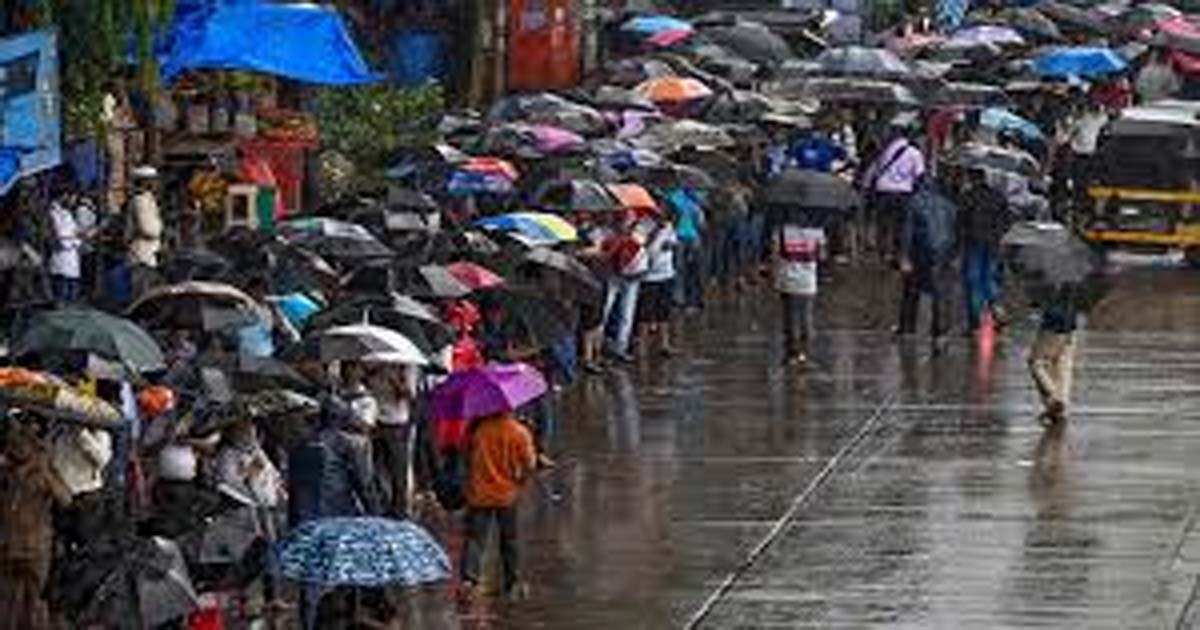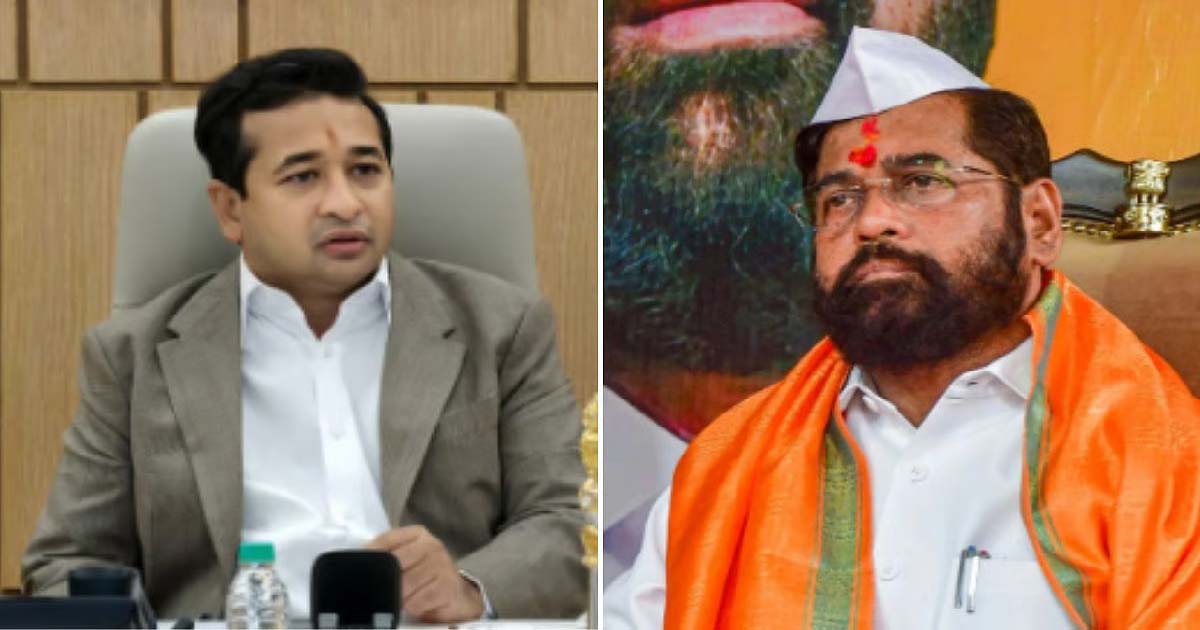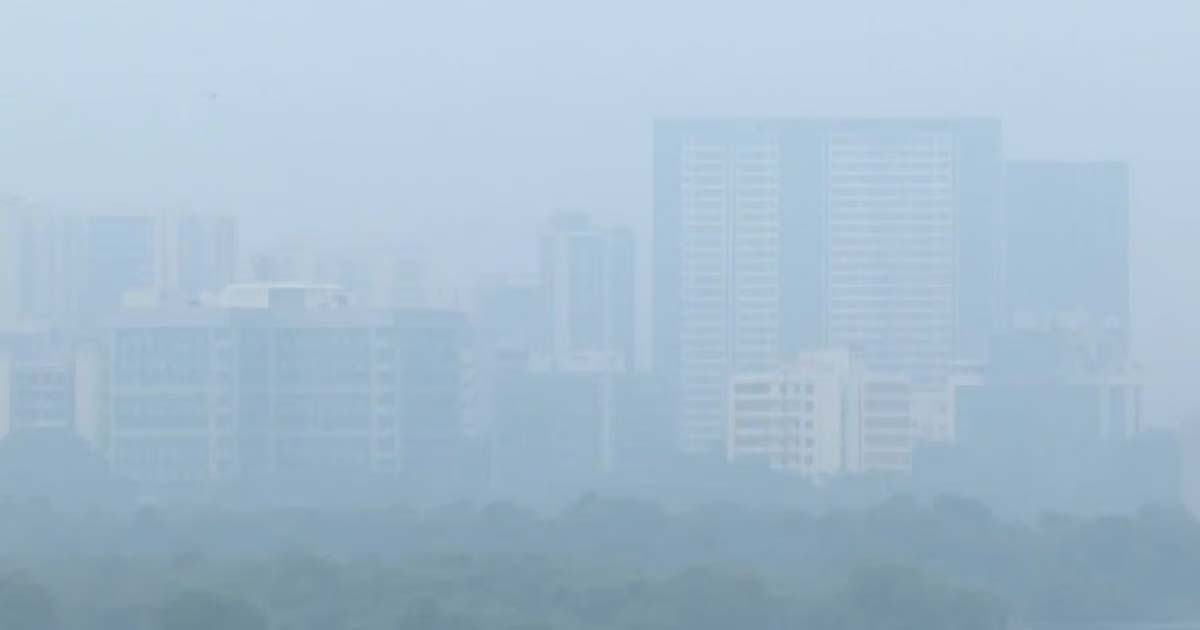Maharashtra
Rain started in Mumbai

Mumbai: Heavy rains have been continuing in Mumbai since last night. Mumbai city has recorded 20.93 mm of rain, East 23.40 mm and West 20.10 mm of rain. Despite the rain continuing in the city and suburbs, life is normal. Train and bus services are normal. Due to rain in the city, there have also been complaints of water accumulation on the roads due to lack of cleaning of drains in low-lying areas. According to BMC, rain will continue in the city and the rain will be intermittent. Therefore, BMC has claimed to make all the arrangements, but due to lack of repair of roads in the city, citizens are facing a lot of problems.
Maharashtra
Maharashtra Politics: Nitesh Rane Questions Dy CM Eknath Shinde’s Rebellion Amid Sena Workers Campaigning For Shiv Sena (UBT) Leader Sandesh Parkar

Mumbai: Maharashtra minister and BJP leader Nitesh Rane has said Shiv Sena workers campaigning for a rival Sena (UBT) candidate in Sindhudurg raised doubts about Deputy CM Eknath Shinde’s past claims that he rebelled against the then MVA government due to “injustice”.
Rane said the situation raised serious doubts about the justification of Shinde’s rebellion in 2022. Notably, the BJP leader’s elder brother, Nilesh Rane, is an MLA from the Shinde-led Shiv Sena.
“Eknath Shinde had claimed he witnessed injustice to Shiv Sena workers under then chief minister and Shiv Sena head Uddhav Thackeray, hence, he rebelled. If he rebelled then, why are his party workers campaigning for Sandesh Parkar, a leader of the Uddhav Thackeray-led Shiv Sena (UBT) and candidate in the Kankavli municipal council elections?” Nitesh Rane asked while speaking to reporters in Sindhudurg district on Saturday evening.
Not only the people of Sindhudurg, but the entire Maharashtra will ask Shinde whether there is any meaning left to his so-called rebellion, the BJP leader said.
The latest outburst against Shinde came at the fag end of the campaigning for the first phase of local body polls, scheduled for December 2, marked by shifting political alliances and one-upmanship bids by leaders of the ruling Mahayuti allies – BJP and Shiv Sena.
Shinde engineered a split in the undivided Shiv Sena in June 2022, leading to the collapse of the Uddhav Thackeray-led Maha Vikas Aghadi (MVA) government.
He then allied with the BJP and became the chief minister, with BJP’s Devendra Fadnavis sworn in as deputy CM.
In February 2024, Maharashtra legislative assembly speaker Rahul Narwekar ruled that Shinde’s faction was the “real Shiv Sena”.
After the BJP emerged as the single largest party in the 2024 assembly polls, Shinde resigned from the post of chief minister in December last year, and Fadnavis became the CM.
Maharashtra
Milind’s gangsters are a symbol of the city’s destruction, action is being taken under MPDA

Mumbai: Milind Police have taken action against Tek Shankar Dhotre, who created terror here by intimidating shopkeepers, passers-by and rickshaw drivers and collected money by threatening them. The action has been taken on the instructions of Additional Commissioner Mahesh Patil. The accused is a terror in the area. A total of 6 cases of violence against him have been registered against him for collecting money. He intimidates traders and shopkeepers and collects money from him every month. No one used to speak out against him. In such a situation, the police took the complainant into confidence and took action against him. He is a terror in Milind. After taking action under the MPDA, the accused was taken into custody and deported from Mumbai to other cities. The Mumbai Police has now started action against such goons to restore the trust of the public towards the police so that the public’s trust in the police is established and the fear of the police remains in the hearts of the goons.
Maharashtra
Mumbai Weather Update: City Continues To See Smog-Filled Morning Amid Rising Pollution; Overall AQI Remains In Unhealthy Range At 281

WETHER
Mumbai: Mumbai began its Friday with a deceptively pleasant chill, as minimum temperatures dipped just below 22°C, offering residents a brief sense of relief. However, this early coolness quickly gave way to discomfort as people stepped outside to find the city blanketed in a dense, lingering smog. Commuters heading out during peak morning hours encountered reduced visibility along with eye irritation, throat discomfort and difficulty breathing, clear signs of an atmosphere overloaded with pollutants.
What initially felt like a refreshing morning soon became yet another stark indicator of Mumbai’s steadily worsening air-quality crisis. A thick haze settled over major roads, residential complexes, commercial hubs and transit routes. With only weak winds sweeping across the region, there was little natural movement to disperse the pollutants that have been steadily accumulating throughout November.
The India Meteorological Department (IMD) reported that the city is expected to experience clear skies through the day, with temperatures likely climbing to around 33°C in the afternoon. While the mild morning chill is expected to persist over the next few days, experts noted that there is still no sign of when Mumbai’s air quality might improve. The stagnant atmospheric conditions continue to trap particulate matter close to the surface, aggravating the city’s pollution load.
On Friday, Mumbai’s overall Air Quality Index (AQI) rose to a worrying 281, placing it firmly in the unhealthy category. This spike represents a major deterioration from earlier in the month, when several neighbourhoods reported moderate or merely poor readings. The decline is now citywide, affecting coastal stretches, industrial belts and densely populated residential areas alike.
Among the worst-affected locations, the Wadala Truck Terminal recorded an alarming AQI of 395, marking it as the most polluted spot of the day. Colaba followed with a reading of 317, while Chakala reported 310, both falling within the severe category.
Prominent business zones were not spared either: Worli and the Bandra-Kurla Complex (BKC) each logged AQI levels of 310, showing how uniformly pollution has spread across Mumbai’s central, western and eastern sectors.
Some suburbs fared marginally better but still failed to reach healthy levels. Kandivali East recorded the day’s lowest AQI at 130, classified as poor. Powai stood at 200, Malad West at 210, Parel Bhoiwada at 220, and Mulund West at 237, placing all within the poor to unhealthy range.
For context, an AQI of 0–50 is considered good, 51–100 moderate, 101–150 poor, 151–200 unhealthy, and anything above 200 classified as severe or hazardous. With much of the city now above that threshold, Mumbai continues to grapple with an air-quality crisis that shows no signs of easing.
-

 Crime3 years ago
Crime3 years agoClass 10 student jumps to death in Jaipur
-

 Maharashtra1 year ago
Maharashtra1 year agoMumbai Local Train Update: Central Railway’s New Timetable Comes Into Effect; Check Full List Of Revised Timings & Stations
-

 Maharashtra1 year ago
Maharashtra1 year agoMumbai To Go Toll-Free Tonight! Maharashtra Govt Announces Complete Toll Waiver For Light Motor Vehicles At All 5 Entry Points Of City
-

 Maharashtra1 year ago
Maharashtra1 year agoFalse photo of Imtiaz Jaleel’s rally, exposing the fooling conspiracy
-

 National News1 year ago
National News1 year agoMinistry of Railways rolls out Special Drive 4.0 with focus on digitisation, cleanliness, inclusiveness and grievance redressal
-

 Maharashtra1 year ago
Maharashtra1 year agoMaharashtra Elections 2024: Mumbai Metro & BEST Services Extended Till Midnight On Voting Day
-

 National News1 year ago
National News1 year agoJ&K: 4 Jawans Killed, 28 Injured After Bus Carrying BSF Personnel For Poll Duty Falls Into Gorge In Budgam; Terrifying Visuals Surface
-

 Crime1 year ago
Crime1 year agoBaba Siddique Murder: Mumbai Police Unable To Get Lawrence Bishnoi Custody Due To Home Ministry Order, Says Report












